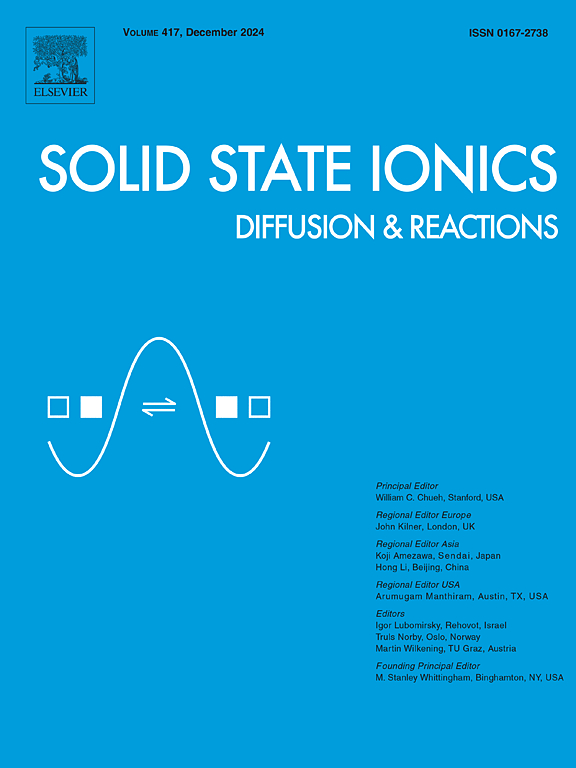Enhancing cycling stability in Li-rich layered oxides by atomic layer deposition of LiNbO3 nanolayers
IF 3
4区 材料科学
Q3 CHEMISTRY, PHYSICAL
引用次数: 0
Abstract
Lithium-rich layered oxides (LROs), serving as high-energy cathode materials for lithium-ion batteries (LIBs), possess significant drawbacks that hinder their widespread use in practical applications. While surface modification can effectively shield LRO from structural degradation, precisely designing the surface structure remains a big challenge. This study focuses on the fabrication of uniform and thickness-controlled LiNbO3-coated nanostructures on the surface of LRO using the atomic layer deposition (ALD) technique. The LiNbO3 nanostructures on the cathode surface not only bolster the structural and interfacial stability but also facilitate Li+ diffusion, enhancing the cycling stability and the rate capability of LRO. Specifically, the LRO modified with a 3 nm thick LiNbO3 layer exhibited better capacity retention of 86.4 % after 200 cycles at 1C with a voltage decay rate of 2.86 mV per cycle, and a reversible discharge capacity of 88.1 mAh g−1 at 10C, underscoring the crucial role of surface nanostructures in enhancing electrochemical performance. This research sheds light on the strategic design of nanostructures at the grain surface of advanced cathode materials for high-performance LIBs.
通过铌酸锂纳米层的原子层沉积提高富锂层状氧化物的循环稳定性
富锂层状氧化物(LROs)是锂离子电池(LIBs)的高能正极材料,但其显著的缺点阻碍了其在实际应用中的广泛使用。虽然表面改性可以有效防止 LRO 的结构退化,但精确设计表面结构仍然是一个巨大的挑战。本研究的重点是利用原子层沉积(ALD)技术在 LRO 表面制备均匀且厚度可控的 LiNbO3 涂层纳米结构。阴极表面的 LiNbO3 纳米结构不仅增强了结构和界面的稳定性,还促进了 Li+ 的扩散,提高了 LRO 的循环稳定性和速率能力。具体而言,经 3 nm 厚的 LiNbO3 层修饰的 LRO 在 1C 下循环 200 次后的容量保持率为 86.4%,电压衰减率为 2.86 mV/次,在 10C 下的可逆放电容量为 88.1 mAh g-1,这突出表明了表面纳米结构在提高电化学性能方面的关键作用。这项研究揭示了在先进阴极材料晶粒表面设计纳米结构以实现高性能锂离子电池的策略。
本文章由计算机程序翻译,如有差异,请以英文原文为准。
求助全文
约1分钟内获得全文
求助全文
来源期刊

Solid State Ionics
物理-物理:凝聚态物理
CiteScore
6.10
自引率
3.10%
发文量
152
审稿时长
58 days
期刊介绍:
This interdisciplinary journal is devoted to the physics, chemistry and materials science of diffusion, mass transport, and reactivity of solids. The major part of each issue is devoted to articles on:
(i) physics and chemistry of defects in solids;
(ii) reactions in and on solids, e.g. intercalation, corrosion, oxidation, sintering;
(iii) ion transport measurements, mechanisms and theory;
(iv) solid state electrochemistry;
(v) ionically-electronically mixed conducting solids.
Related technological applications are also included, provided their characteristics are interpreted in terms of the basic solid state properties.
Review papers and relevant symposium proceedings are welcome.
 求助内容:
求助内容: 应助结果提醒方式:
应助结果提醒方式:


